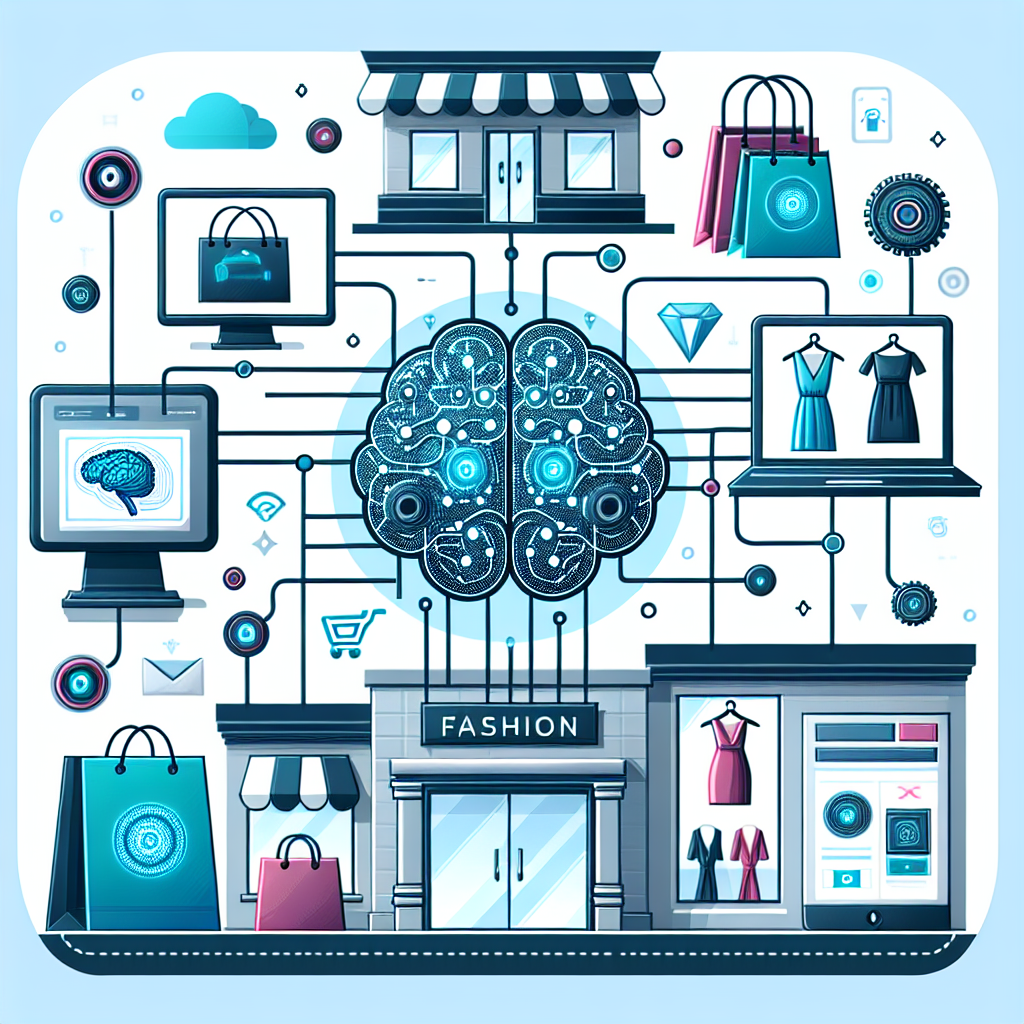Artificial Intelligence (AI) is revolutionizing the fashion retail industry by enabling brands to create seamless omnichannel shopping experiences for their customers. By leveraging AI technology, fashion retailers can integrate their online and offline channels to provide a cohesive and personalized shopping experience across all touchpoints. In this article, we will explore how AI is transforming the fashion retail industry and discuss the strategies that brands are using to enhance their omnichannel capabilities.
The Role of AI in Fashion Retail
AI has the potential to transform every aspect of the fashion retail industry, from product design and manufacturing to marketing and customer service. In the context of omnichannel retail, AI plays a crucial role in connecting the online and offline shopping experiences, enabling brands to provide a seamless and personalized shopping journey for their customers.
One of the key ways that AI is being used in fashion retail is through data analytics and machine learning algorithms. By analyzing customer data, AI can help retailers understand their customers’ preferences, behavior, and shopping patterns. This information can then be used to personalize the shopping experience, recommend products, and create targeted marketing campaigns that resonate with customers.
AI-powered chatbots and virtual assistants are also becoming increasingly popular in the fashion retail industry. These intelligent systems can help customers find products, answer questions, and provide personalized recommendations, all in real-time. By integrating chatbots into their online and offline channels, brands can provide a seamless and efficient customer service experience that drives engagement and loyalty.
Another key application of AI in fashion retail is through visual search and image recognition technology. By enabling customers to search for products using images, retailers can create a more intuitive and interactive shopping experience that mimics the in-store browsing experience. This technology can also be used to enhance product recommendations and personalize the shopping journey based on the customer’s visual preferences.
Omnichannel Strategies for Fashion Retail
To create a successful omnichannel shopping experience, fashion retailers need to integrate their online and offline channels seamlessly. This requires a combination of technology, data analytics, and customer-centric strategies that prioritize convenience, personalization, and engagement. Here are some key omnichannel strategies that brands are using to enhance their customer experience:
1. Unified Customer Data: To provide a personalized shopping experience across all channels, fashion retailers need to have a unified view of their customers’ data. By integrating data from online and offline channels, retailers can create a comprehensive customer profile that includes preferences, behavior, and purchase history. This information can then be used to personalize product recommendations, marketing campaigns, and shopping experiences for each customer.
2. Seamless Shopping Experience: One of the key goals of omnichannel retail is to create a seamless shopping experience that allows customers to move effortlessly between online and offline channels. This requires retailers to integrate their inventory, pricing, and promotions across all channels, so that customers can access the same products and deals regardless of where they are shopping. By providing a consistent and convenient shopping experience, brands can increase customer loyalty and drive sales.
3. Personalized Recommendations: AI-powered recommendation engines are a powerful tool for enhancing the omnichannel shopping experience. By analyzing customer data and behavior, retailers can create personalized product recommendations that are tailored to each customer’s preferences and needs. These recommendations can be delivered through email, social media, chatbots, and other channels, creating a cohesive shopping journey that guides customers towards products they are likely to purchase.
4. Interactive Technology: To create a more engaging and interactive shopping experience, fashion retailers are leveraging AI-powered technologies such as virtual reality (VR) and augmented reality (AR). These technologies allow customers to visualize products in 3D, try on virtual outfits, and customize their shopping experience in ways that were previously only possible in-store. By integrating interactive technology into their online and offline channels, brands can create a more immersive and memorable shopping experience that sets them apart from competitors.
5. Social Media Integration: Social media is a powerful tool for connecting with customers and driving engagement in the fashion retail industry. By integrating social media platforms into their omnichannel strategy, brands can create a seamless shopping experience that allows customers to discover products, share their purchases, and engage with the brand in real-time. This can help retailers build a loyal and engaged community of customers who are more likely to make repeat purchases and recommend the brand to others.
FAQs:
Q: How can AI help fashion retailers improve their inventory management?
A: AI can help fashion retailers improve their inventory management by analyzing sales data, customer demand, and market trends to optimize their inventory levels. By using AI-powered forecasting and inventory optimization tools, retailers can reduce stockouts, minimize overstock, and improve their overall inventory turnover rates.
Q: What are the benefits of using AI-powered chatbots in fashion retail?
A: AI-powered chatbots can help fashion retailers provide personalized customer service, answer questions, and assist customers with their shopping journey in a timely and efficient manner. By using chatbots, retailers can reduce response times, improve customer satisfaction, and drive engagement across their online and offline channels.
Q: How can fashion retailers use AI to personalize their marketing campaigns?
A: Fashion retailers can use AI to personalize their marketing campaigns by analyzing customer data, preferences, and behavior to create targeted and relevant messaging. By using AI-powered recommendation engines, retailers can deliver personalized product recommendations, promotions, and content that resonate with each customer, driving engagement and sales.
In conclusion, AI is transforming the fashion retail industry by enabling brands to create seamless omnichannel shopping experiences that integrate online and offline channels. By leveraging AI technology, fashion retailers can personalize the shopping journey, provide interactive and engaging experiences, and drive customer engagement and loyalty. By implementing AI-powered strategies and technologies, fashion retailers can stay ahead of the competition and deliver a truly connected and personalized shopping experience for their customers.

